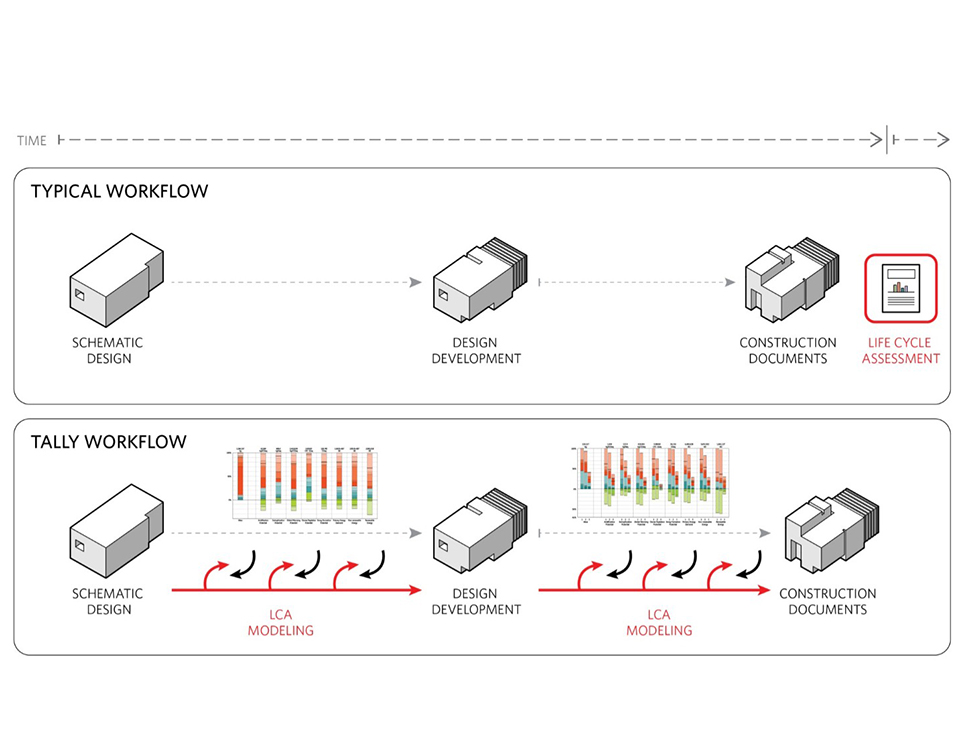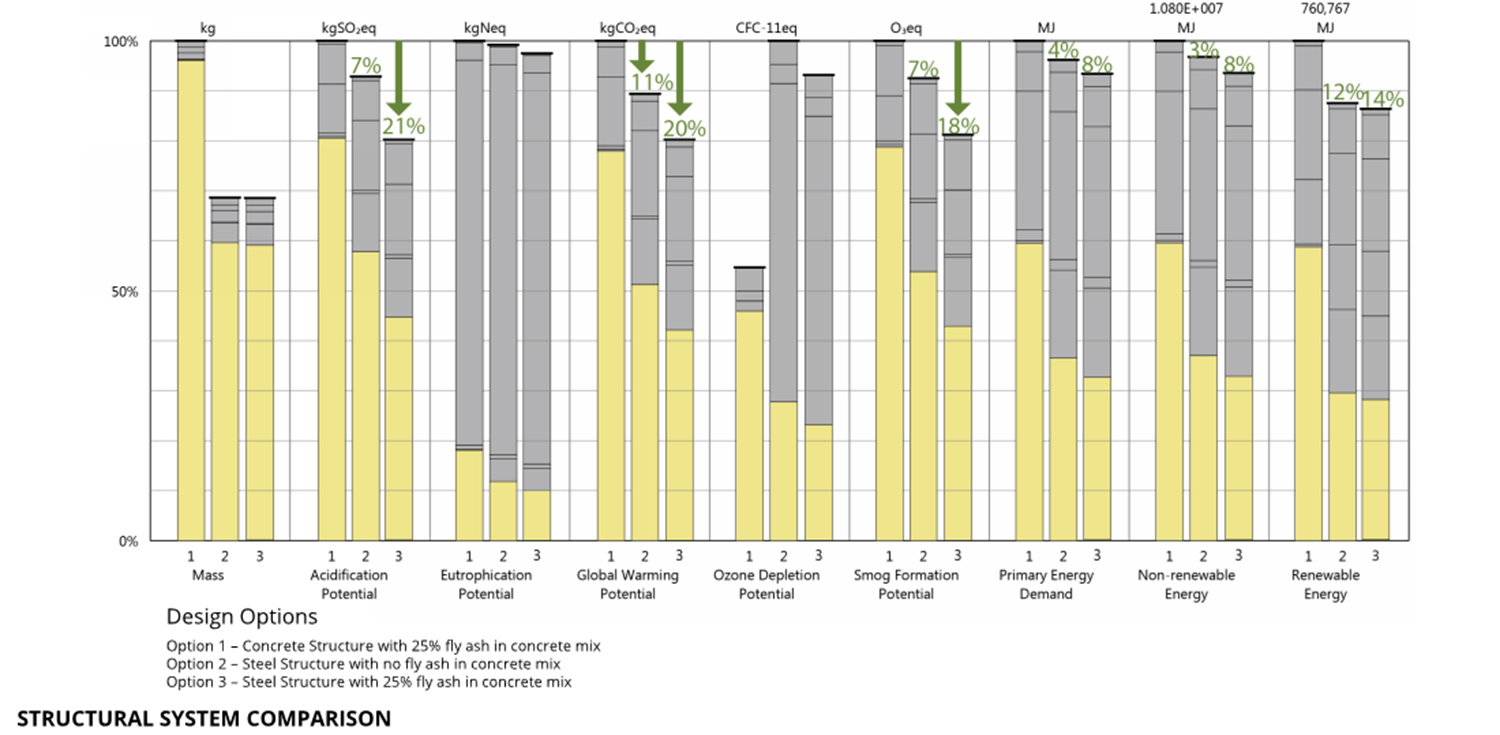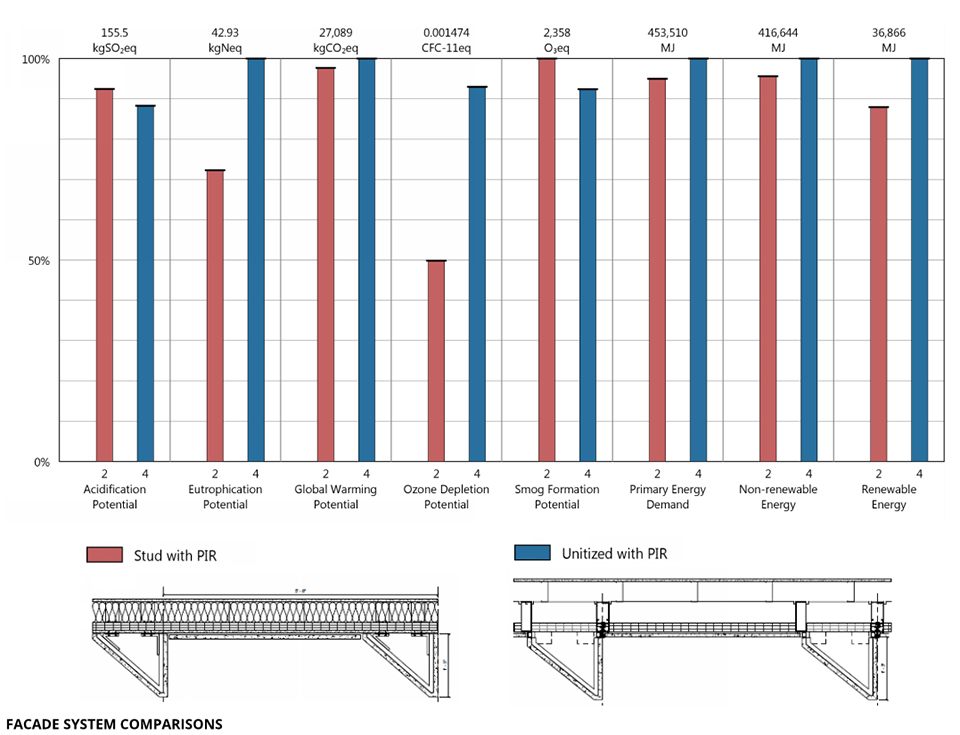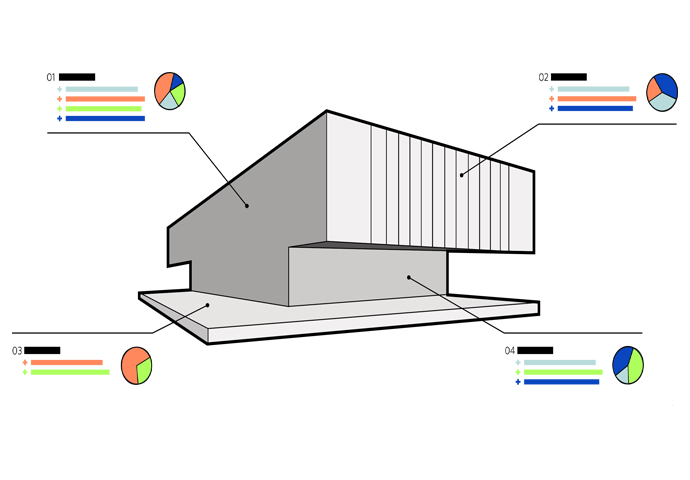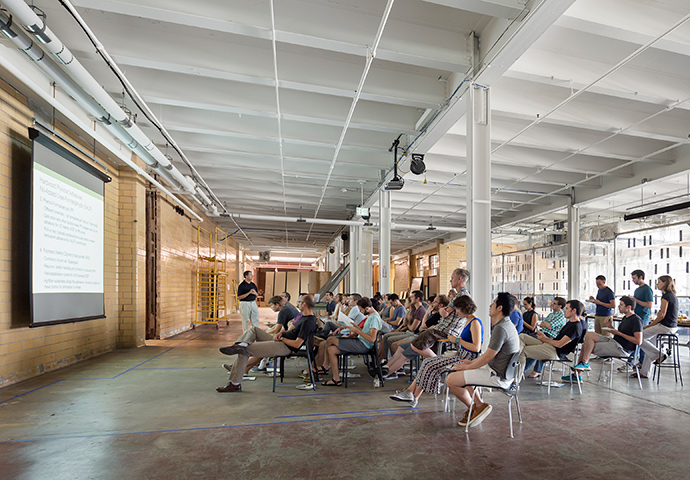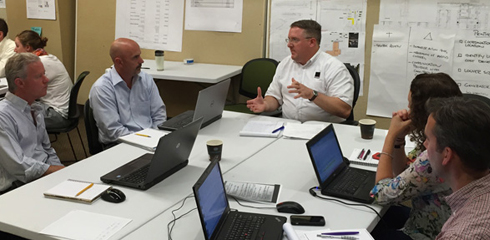Tally® Analysis at the Brown School of Engineering
Throughout the design for Brown University's new School of Engineering, architects at KieranTimberlake used Tally® to aid in the selection of building materials based on their environmental impacts.
©KieranTimberlake
At the 2015 Greenbuild Conference in Washington DC, KieranTimberlake researcher Roderick Bates presented regarding the evolution of Tally®, the firm's custom Life Cycle Assessment (LCA) tool for designers. Speaking to a room of sustainable building practitioners and advocates, Bates explained how this tool has the unique capacity to allow designers to quickly assess the environmental implications of different materials used in their projects. As an example, his presentation articulated KieranTimberlake's experience using Tally in the selection of materials for Brown University's new School of Engineering building.
Motivated by Brown's vision for sustainability at the new School of Engineering, architects utilized Tally's analytics throughout schematic design to select materials that would minimize the building's environmental impacts. Prior to KieranTimberlake's development of Tally, holistically considering LCA information during material selection was tedious and inefficient. Previously, comparing two types of wall constructions would have required lengthy calculations involving material types, material volumes, and manufacturing reports. Instead, Tally enables designers to pull material impact data from an environmental database developed by the company thinkstep. Tally integrates this data into architects' BIM models and allows them to run streamlined life cycle assessments on complex systems such as construction assemblies or full buildings.
Architects used Tally to determine which building materials would best meet Brown University's goal of a sustainable space.
©KieranTimberlake
In addition to employing Tally, the project team used an Integrated Project Delivery (IPD) approach, a concept-to-construction model for building that incentivizes early and frequent collaboration between project owners, architects, engineers, and contractors. By participating in consistent conversation with these parties, the IPD approach empowered the architects to implement Tally early and effectively in the design process. In more traditional approaches to project delivery, material selection by an architect may later be altered due to unforeseen issues with the structural engineer or contractor, making LCA reports inaccurate. By involving these parties early with IPD, environmental insights gained by using Tally are able to have lasting influence on the project's execution.
In contrast to the traditional design workflow, Tally offers the ability to assess the life cycle impacts of materials throughout the design process, rather than undergoing LCA following design completion.
©KieranTimberlake
Because a building's structure and thermal envelope (the enclosure that protects the interior from the elements) make up the majority of the environmental impacts of a building, these areas were an early focus for integration of Tally and the IPD approach. Architects first utilized Tally to compare steel to concrete as the primary material for the engineering school's structural system. The LCA reports generated by the tool measured environmental impacts ranging from global warming to ozone depletion. In terms of environmental performance, the steel structure emerged as the clear choice because of its fewer associated ecological impacts across almost all categories.
After selecting steel as the primary structural material, the team looked closer at the concrete type present within their steel construction scheme. The early decision making afforded by Tally allowed designers to quickly refocus on comparing standard concrete to concrete containing 25% fly ash for use as the secondary material for the structure. The team found that by using Tally to select 25% fly ash concrete as the secondary material, global warming impacts were reduced from the structural baseline by 20%. This reduction is equivalent to taking 45 cars off the road for one year.
The Tally-generated graph created for the structural comparison study shows that a primarily steel structure with 25% fly ash concrete yields a 20% reduction in global warming potential from the baseline concrete structure.
©KieranTimberlake
Once the structural materials were decided upon, designers then used Tally to inform the building envelope's details. "This portion of the analysis was much more closely tied to the IPD process," Efrie Friedlander, an environmental researcher on the project, said. "We were able to model the standard construction practices of the contractor as a baseline, and then compare options against that baseline to see where we could make improvements." Starting by comparing a stud wall to a unitized curtainwall assembly, the team determined that the stud wall construction had fewer impacts across environmental indicators including acidification potential, eutrophication potential, and ozone depletion potential. With further examination, they determined that the largest contributor to the building envelope's impacts was the envelope's insulation system. By adjusting the insulation choice from PIR board to mineral wood board, the global warming potential of the building was reduced by an additional 6%, garnering savings comparable to one quarter of the energy use of a typical American home in one year.
The stud wall construction type, indicated in red, has reduced environmental impacts in all criteria except smog formation potential and acidification potential. This chart, generated using Tally, informed the architects' decisions about wall construction.
The use of Tally in the preliminary design of Brown's School of Engineering is an example of the great potential of iterative LCA analysis to question fundamental design and construction practices. The project team's use of the IPD approach in tandem with Tally allowed for the kind of rigorous feedback, continuous inquiry, and nimble decision-making that is the hallmark of KieranTimberlake's innovative approach to sustainable design.





